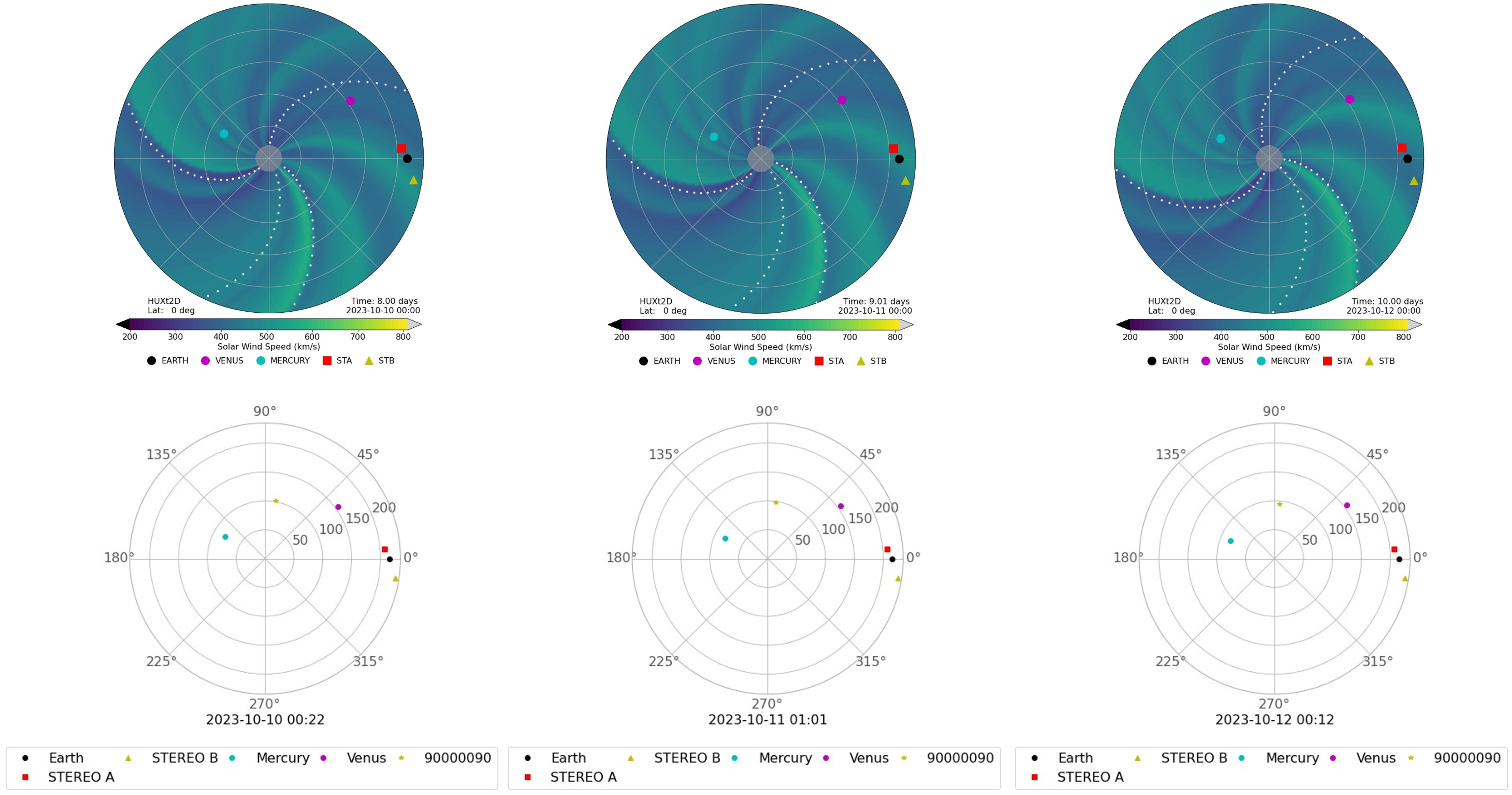2023 October 8
Comet tail disconnection event predictions
Disconnection events
The ion tail of a comet is driven away from the coma by the solar wind which flows past a comet at several hundred km/s. The solar wind is gusty and this can lead to disconnection events (DEs) where the ion tail is ripped away from the coma and a new tail forms behind it. An example of such a DE is visible in this animation. A number of spacecraft in orbit around the Sun now allow us to predict the solar wind and, possibly, predict comet disconnection events. Chris Scott and Sarah Watson at the University of Reading have been working on the STEREO mission looking at solar weather and they have now developed a model that they think would predict when comet ion tails are likely to be affected by the solar wind.
This page will contain alerts from the Reading group when comets that are visible from the Earth are subject to DEs. Please send any observations to the section whether or not they show any evidence of DEs. This will help validate (or otherwise) the model. Remember that the ion tails of comets can be very dynamic so relatively short stacks will be required in order to avoid blurring out detail.
2023 October 6 – 2P/Encke
Comet 2P/Encke is currently a morning object and it has been showing a faint ion tail in deep images such as this one. The tail is very faint and detection will probably require fast optics and a dark sky. Current images of the comet are in our archive here. The current predictions indicate possible strong activity in the tail in the week beginning October 8.
Sarah Watson writes:
I have modelled the predicted solar wind conditions over a period next week using our solar wind model here at Reading, and from early results I think there may be some strong activity in the tail of Comet Encke next week. The following plot shows the predicted solar wind conditions in the heliospheric ecliptic plane, with the positions of the inner planets and the two STEREO spacecraft for reference. The top three images are the model results for around midnight on the 10th 11th and 12th October. The periods of faster solar wind are shown in the lighter blue colours and the white dotted lines are the expected location of the Heliospheric Current Sheet (so there will be a change in the magnetic field polarity). The three plots underneath these are the location of comet Encke (yellow star on plot) at these dates. As you can see, the comet will cross a faster solar wind stream on the 10th October, and also then cross the Heliospheric Current Sheet at some point during the 11th to the 12th. From previous observations, I can anticipate these two conditions will cause some turbulence within the tail and maybe even a disconnection.

Jaeger image of 2P from October 14 showing a DE in the ion tail.
| The British Astronomical Association supports amateur astronomers around the UK and the rest of the world. Find out more about the BAA or join us. |
